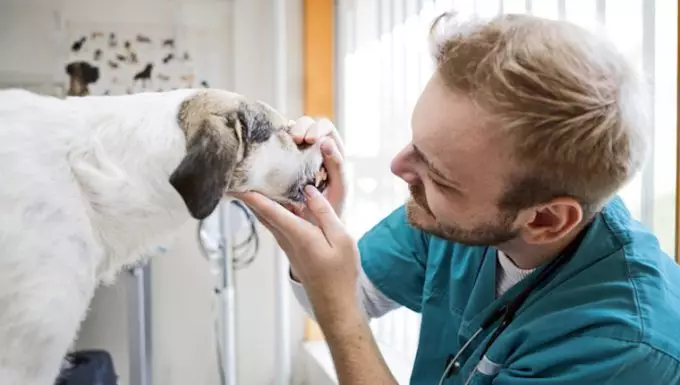Oral chondrosarcoma is a rare but significant form of bone cancer predominantly seen in dogs, characterized by the growth of tumors in the cartilage within the mouth. This cancer type is particularly concerning because it tends to affect larger breeds more frequently than their smaller counterparts. Moreover, it is more commonly diagnosed in middle-aged and older dogs compared to younger dogs. While there are instances of chondrosarcoma affecting other areas of the body, such as the ribs or pelvis, its manifestation in the oral cavity presents unique diagnostic and treatment challenges.
The symptoms of oral chondrosarcoma can be subtle at first but often escalate, making early detection crucial. Common indicators include persistent bad breath, noticeable weight loss, swollen lymph nodes, excessive drooling, and difficulty eating. Additionally, affected dogs might show signs of lethargy, and unusual coughing or sneezing may occur due to the tumor’s impact on nearby structures. Recognizing these signs early can significantly improve the chances of successful treatment by prompting timely veterinary intervention.
The specific causes of oral chondrosarcoma remain largely idiopathic, meaning they are unknown. However, certain patterns have been observed: larger breed dogs and those of advanced age seem to have a higher incidence of this condition. Studies suggest that male dogs are more prone to developing oral chondrosarcoma than females, raising questions about possible genetic predispositions. Despite ongoing research, the absence of definitive causative factors calls for heightened awareness among dog owners regarding the symptoms and risks associated with this condition.
Accurate diagnosis of oral chondrosarcoma is essential for effective treatment. Initially, veterinarians will conduct a thorough clinical evaluation, inquiring about the dog’s symptoms and reviewing its medical history. A full physical examination follows, during which veterinarians may utilize imaging techniques such as X-rays to identify any abnormalities in the jaws and surrounding tissues. Ultimately, the diagnosis is confirmed through a biopsy, allowing for the examination of tissue samples under a microscope to ascertain the nature of the tumor.
The primary treatment for oral chondrosarcoma is surgical intervention aimed at removing the tumor. Depending on the tumor’s location and size, this may require significant surgical resection, sometimes involving portions of the jawbone. Post-operative care is vital; veterinarians typically prescribe pain medication to facilitate smoother recovery. Creating a tranquil and stress-free environment at home supports healing, and owners may need to limit their dog’s activity levels during recuperation. Adhering to prescribed medication regimens and monitoring recovery progress are critical responsibilities for pet owners during this period.
Oral chondrosarcoma is a serious ailment that requires conscientious attention from dog owners. Understanding its symptoms, causes, diagnostic processes, and treatment options empowers owners to make informed decisions about their pets’ health. Early veterinary intervention remains the linchpin of successful management, highlighting the importance of regular check-ups and being observant of any changes in a dog’s behavior or health.

